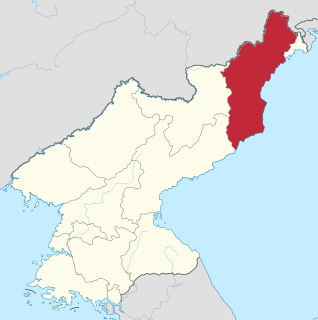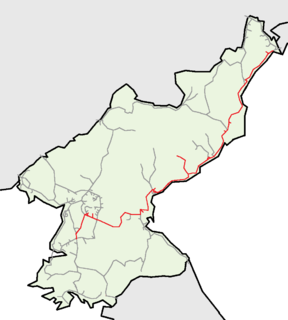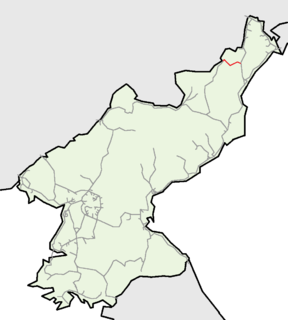Ch'ŏlsong Ch'ŏngnyŏn 철송청년 | ||||||||||||||||
|---|---|---|---|---|---|---|---|---|---|---|---|---|---|---|---|---|
| Korean name | ||||||||||||||||
| Hangul | 철송청년역 | |||||||||||||||
| Hanja | 鉄 松 青 年 驛 | |||||||||||||||
| Revised Romanization | Cheolsongcheongnyeon-yeok | |||||||||||||||
| McCune–Reischauer | Ch'ŏlsongch'ŏngnyŏn-yŏk | |||||||||||||||
| General information | ||||||||||||||||
| Location | Ch'ŏlsong-ri, Musan, North Hamgyŏng North Korea | |||||||||||||||
| Coordinates | 42°12′47″N129°17′45″E / 42.2130°N 129.2958°E Coordinates: 42°12′47″N129°17′45″E / 42.2130°N 129.2958°E | |||||||||||||||
| Owned by | Korean State Railway | |||||||||||||||
| History | ||||||||||||||||
| Opened | 15 November 1929 | |||||||||||||||
| Electrified | yes | |||||||||||||||
| Previous names | Chinhwa Station | |||||||||||||||
| Original company | Chosen Railway | |||||||||||||||
| Services | ||||||||||||||||
| ||||||||||||||||
Ch'ŏlsong Ch'ŏngnyŏn Station is a railway station in Ch'ŏlsong-ri, Musan county, North Hamgyŏng province, North Korea, on the Musan Line of the Korean State Railway. It is also the starting point of the freight-only Musan Mining Branch to Musan Kwangsan station. [1]

Musan County is a county in central North Hamgyong province, North Korea. It borders the People's Republic of China to the north, across the Tumen River. It is divided into one ŭp, six labor districts, and fifteen ri. The county seat is the town of Musan, Musan ŭp. Luguo and Dehua are the closest Chinese cities across the river.

North Hamgyong Province is the northernmost province of North Korea. The province was formed in 1896 from the northern half of the former Hamgyong Province.

North Korea, officially the Democratic People's Republic of Korea, is a country in East Asia constituting the northern part of the Korean Peninsula, with Pyongyang the capital and the largest city in the country. The name Korea is derived from Goguryeo which was one of the great powers in East Asia during its time, ruling most of the Korean Peninsula, Manchuria, parts of the Russian Far East and Inner Mongolia, under Gwanggaeto the Great. To the north and northwest, the country is bordered by China and by Russia along the Amnok and Tumen rivers; it is bordered to the south by South Korea, with the heavily fortified Korean Demilitarized Zone (DMZ) separating the two. Nevertheless, North Korea, like its southern counterpart, claims to be the legitimate government of the entire peninsula and adjacent islands.
Contents
There is a locomotive depot located here. [2]






